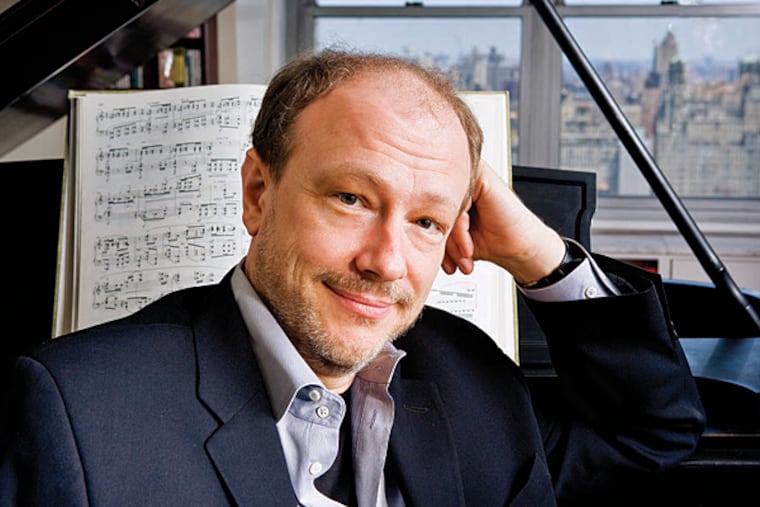Pianist Marc-Andre Hamelin makes claim on greatness
Pianist Marc-Andre Hamelin has done greatly scintillating things in many corners of the piano repertoire. But is he a great pianist?

Pianist Marc-Andre Hamelin has done greatly scintillating things in many corners of the piano repertoire. But is he a great pianist?
That notion somehow seemed not on the table until his Philadelphia Chamber Music Society recital on Tuesday night when he played Schubert's Piano Sonata in B-flat at the Kimmel Center in ways that, at every turn, were utterly distinctive to him and rendered in a manner that could only have been cultivated over multiple decades at the keyboard. Deeply felt? Lots of people can do that in this profoundly searing sonata. This performance was comprehensively felt.
Though late-period Beethoven sonatas are like knotty Zen koans, Schubert becomes a touchstone in one's inner life, with its expansive, searching first movement, punctuated by bass-range rumbling that appears like some confrontational life-lesson, followed by a halting, fragmented second movement that ponders life at its most basic.
Pianists such as Sviatoslav Richter and Evgeny Kissin have been alternately loved and questioned for their incredibly slow tempos in this piece. Hamelin pushed the slowness envelope as much as anyone, while also not maintaining anything resembling a steady tempo. Though this sonata is full of repeated notes in regular rhythms, no such thing existed in Hamelin's performance but was always handled with deeply considered expressive purpose, shaping phrases with such richness and authority that I often thought, "So that's what it means!"
Good arguments are to be made for a more classical-era approach. But whatever one's viewpoint on these matters, Hamelin's virtuoso piano technique was fully harnessed in the service of Schubert's unvirtuosic music, allowing soft playing to make a more penetrating impression than usual.
The paradox: This super-personal performance was also super-faithful to the score markings, which shows how much the notes and the composer's directions on playing them can be only the tip of the iceberg when the music behaves like a living, breathing organism.
Elsewhere in the program - dedicated to Hamelin's recently deceased Temple University teacher Harvey Wedeen - the music was the polar opposite.
Schubert's broad washes of melody made a great contrast to numerous, fine-etched details of Debussy's Images Book II. Hamelin's own Pavane Variée and Variations on a Theme of Paganini seemed bent on packing as many kinds of music as possible into a single piece, sometimes taking the gauche humor of Beethoven's Diabelli Variations to a new level. Hamelin introduced his second piece by swearing that he really doesn't dislike Paganini.
But with friends like that . . .